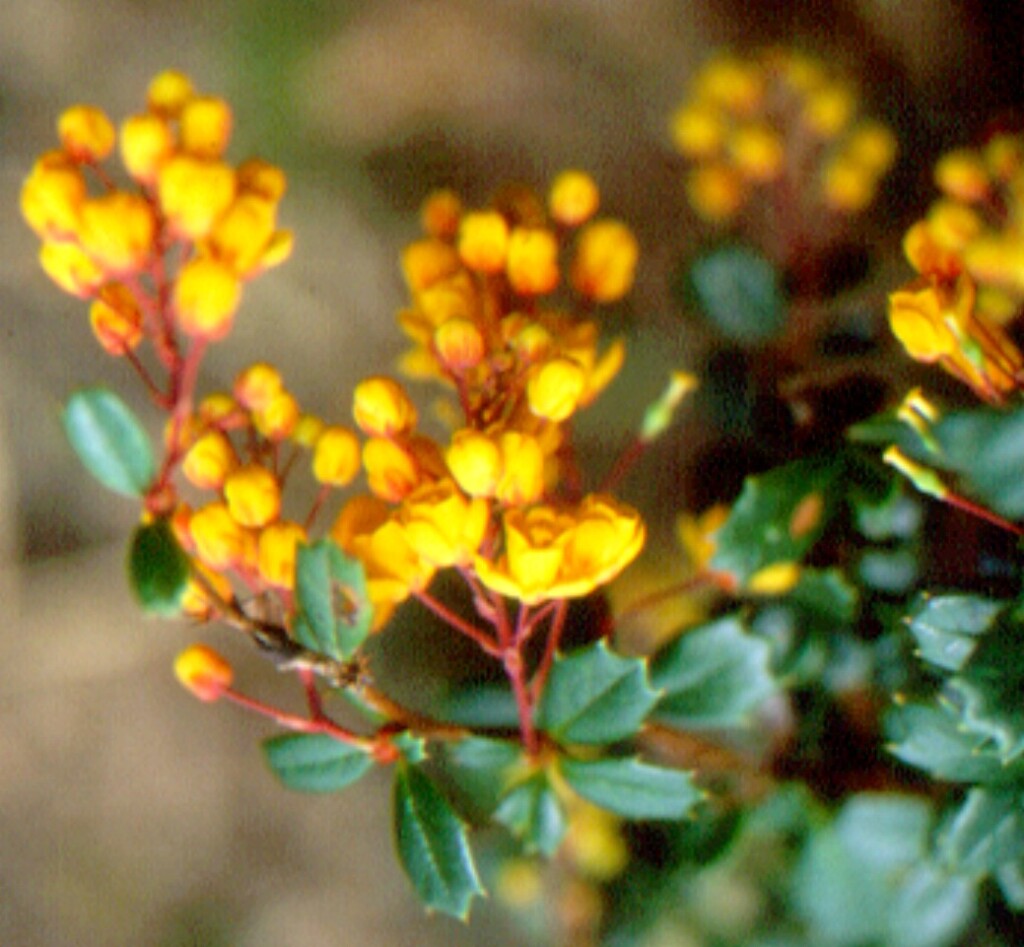Berberis darwinii
Hook. Darwin's BarberryEvergreen shrub mostly 1–2 m high. Branches finely rusty-pubescent. Spines deeply and evenly 5-lobed, 3–6 mm long. Leaves in clusters of 3–7, obovate to cuneate, 1–3 cm long, 8–18 mm wide, very rigid, 3-toothed at apex, with or without up to 3 teeth along the sides, the teeth all spine-tipped, upper surface dark green and shining, lower surface pale and dull. Racemes pendulous, 2–5 cm long, 8–20-flowered. Sepals ovate, 2–4 mm long, reddish; petals 9, yellow, the outer 3 obovate, 4–7 mm long, the inner 6 obovate to spathulate, slightly shorter than outer. Berry ellipsoid, 6–9 mm long, very dark with bluish waxy bloom. Flowers Sep.–Nov.
GipP, CVU, HSF, HNF. Native in southern South America. Escaped from cultivation (from bird-dispersed seed) in the Dandenong Ranges (e.g. Mt Dandenong, Sherbrooke Forest) and the Mornington Peninsula.
Walsh, N.G. (1996). Berberidaceae. In: Walsh, N.G.; Entwisle, T.J., Flora of Victoria Vol. 3, Dicotyledons Winteraceae to Myrtaceae, pp. 64–64. Inkata Press, Melbourne.
 Spinning
Spinning



